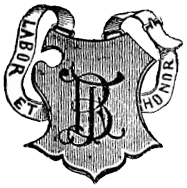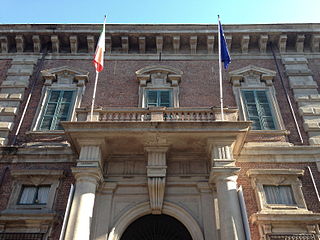
Palazzo Brera or Palazzo di Brera is a monumental palace in Milan, in Lombardy in northern Italy. It was a Jesuit college for two hundred years. It now houses several cultural institutions including the Accademia di Brera, the art academy of the city, and its gallery, the Pinacoteca di Brera; the Orto Botanico di Brera, a botanical garden; an observatory, the Osservatorio Astronomico di Brera; the Istituto Lombardo Accademia di Scienze e Lettere, a learned society; and an important library, the Biblioteca di Brera.
Ludovico Geymonat was an Italian mathematician, philosopher and historian of science. As a philosopher, he mainly dealt with philosophy of science, epistemology and Marxist philosophy, in which he gave an original turn to dialectical materialism.
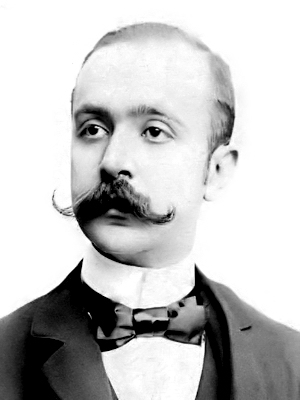
Federico De Roberto was an Italian writer, who became well known for his historical novel I Viceré (1894), translated as The Viceroys.

Clorinda Corradi was an Italian opera singer and one of the most famous contraltos in history.

Giovanni Raboni was an Italian poet, translator and literary critic.
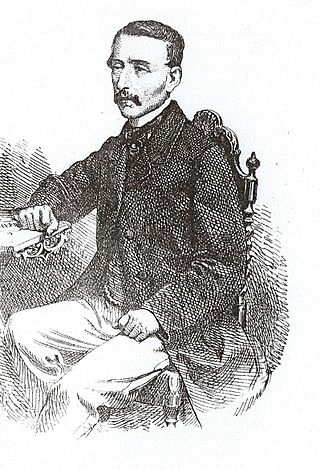
Carlo Ilarione Petitti count of Roreto was an Italian economist, academic, writer, counsellor of state, and senator of the Kingdom of Sardinia. He is seen as a prominent figure in the Italian Risorgimento.
Sansepolcrismo is a term used to refer to the movement led by Benito Mussolini that preceded Fascism. The Sansepolcrismo takes its name from the rally organized by Mussolini at Piazza San Sepolcro in Milan on March 23, 1919, where he proclaimed the principles of Fasci Italiani di Combattimento, and then published them in Il Popolo d'Italia, on June 6, 1919, the newspaper he co-founded in November 1914 after leaving Avanti!
Andrea Della Corte was an Italian musicologist and critic. Born in Naples on 5 April 1883, Della Corte studied law at the University of the native city, but was self-taught in music. After some short experiences in Neapolitan papers, he moved to Turin, where he was music critic for La Stampa from 1919 to May 1967. He brought the music journalism in Italy to a level of «professionalism hitherto unknown». In Turin, Della Corte also taught history of music, both at the Conservatory (1926–53) and at the University (1939–53).
Gianni Pezzani, is an Italian photographer.
Filippo Carli was an Italian sociologist and fascist economist. After graduating in law in 1916, he was appointed as secretary of the Chamber of Commerce of Brescia. He retained this post until 1928 meanwhile studying sociology and economic history. He went on to teach at the universities of Cagliari and Pisa.

Fratelli Treves was an Italian publishing house based in Milan. Founded in 1861 by Emilio Treves from Trieste, it was active under its own name until 1939.
The National Library Service of Italy is a Ministry of Cultural Heritage and Activities promoted network of Italian libraries, in collaboration with Regions and Universities, and coordinated by the Central Institute for the Union Catalogue of Italian Libraries and Bibliographic Information.
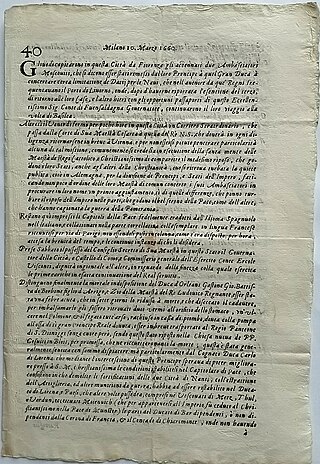
Milano was a newspaper published in Milan from 1640 to 1768. It is considered one of the oldest newspapers in Italy.

The Brigate Garibaldi or Garibaldi Brigades were partisan units aligned with the Italian Communist Party active in the armed resistance against both German and Italian fascist forces during World War II.
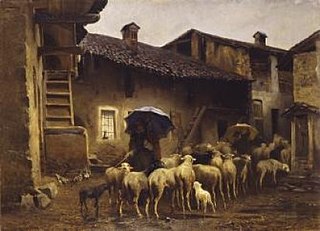
Return to the Sheepfold is a c. 1866 painting by Carlo Pittara, originally entitled The Return, now in the Galleria civica d'arte moderna e contemporanea in Turin.
Maria Rosa Cutrufelli is an Italian writer and journalist.

Francesco Salata was an Italian senator, politician, journalist, historian and writer. Salata was an irredentist, although he had a more legalistic approach than other contemporaries, as well as being more liberal. He was panned and attacked by the fascists, although, after they took power, he was employed by the fascist government, and wrote books apologizing for the fascist politics. Very fond of his native Istria, Salata opposed what he saw as the slavicisation carried out by Croatian priests in Istria, the Kvarner and Dalmatia. He accused the Slovenian and Croatian clergy of carrying out the slavicisation of Istria and the Kvarner. Salata upheld the idea that Dalmatia, Istria and the Kvarner were, historically, Italian lands.
Alberto Moioli,, is an Italian art critic, writer and curator. He is the editorial director of the Enciclopedia d'arte italiana.

Ettore Bignone was an Italian classical philologist and man of letters.
Carlo Dell'Avalle was an Italian politician, and the first secretary of the Italian Socialist Party.
